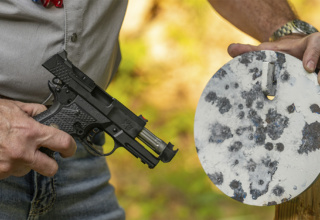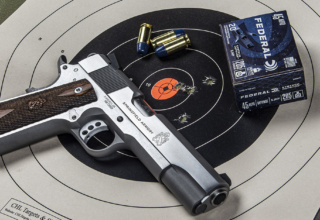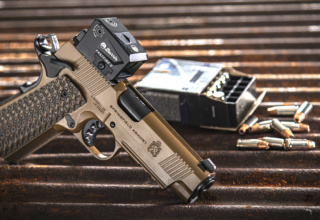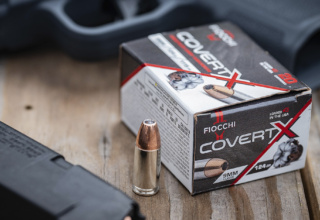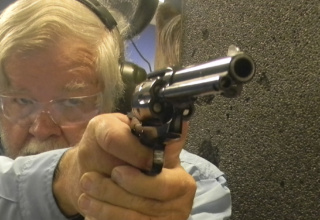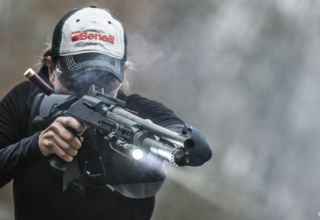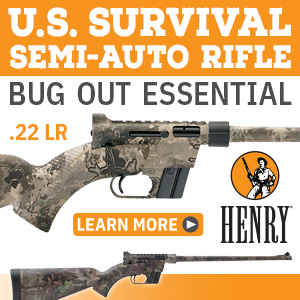Though a tad pricy, these two custom 1911s promise reliability and remarkable accuracy
by Bob Campbell
As a middle schooler, I read a series of books by C. B. Colby that covered many types of firearms. Colby was a prolific writer and wrote in a simple, straightforward, informative manner, and I was most interested in the words he penned about the 1911-type handgun.
Later, I began reading Colonel Cooper’s clear, incisive writings regarding the 1911. I developed a love affair with this handgun model, and I have owned and carried the 1911 for over forty years.
I have worn the pistol in police service, fired it in competition, and taken medium-sized animals with the handgun. I own numerous .45 ACP 1911s, and I have tried the 10mm and .38 Super, even the 9mm, but I like the low pressure, clean powder burn, and modest muzzle signature of the .45 ACP.
Despite quite a bit of revisionist history and questionable science, the .45 ACP offers superior wound ballistics to a small bore cartridge. I carry a 1911 because I shoot it best, and it performs well.
Today, there are bargain basement 1911 pistols made of inferior material, and I prefer a Glock or CZ to a cheap and unreliable 1911. There are, though, excellent middle-of-the-road 1911 pistols from Springfield, Kimber, and Colt, to name a few.
Then, there is Les Baer.
Les Baer has mastered the gunsmith’s art. Baer began working with drag cars and blueprinting engines and became a master in the art of precision and tolerance machining. In a nutshell, the best performance comes when tolerances are tight. There is less wear with a tighter fit. The parts go back into place in the same manner every time, which means the wear is smooth and even. The more loose motion, the more the chance of abnormal wear.
Baer took his knowledge of drag cars and jumped into firearms. Today, the Les Baer facility manufactures frames and slides. The fitting is individual, and these are accurate, custom-grade handguns. They are not inexpensive. If you’re flush with funds or have saved your pennies and are looking for a quality shooter, Les Baer pistols will compliment you. Like many custom-grade tools, you must understand these handguns before using them correctly.
The Premier
The original Les Baer pistol is the Premier, and mine has seen some use. The slide has some wear around the muzzle. The beautiful blue finish is still gorgeous, and the wear is honest. The pistol sets well in hand. A serrated mainspring housing, checkered grips, and a nicely done checkered grip strap make for a good balance of abrasion and adhesion. The beavertail grip safety releases its hold on the trigger about halfway into compression. This beavertail is essential for those shooting the 1911 with a modern technique. When you use the thumb forward grip, sometimes the palm creates a cup and releases the grip safety. This beavertail safety prevents this. The hand is funneled into the grip, and the bore axis is lowered slightly.
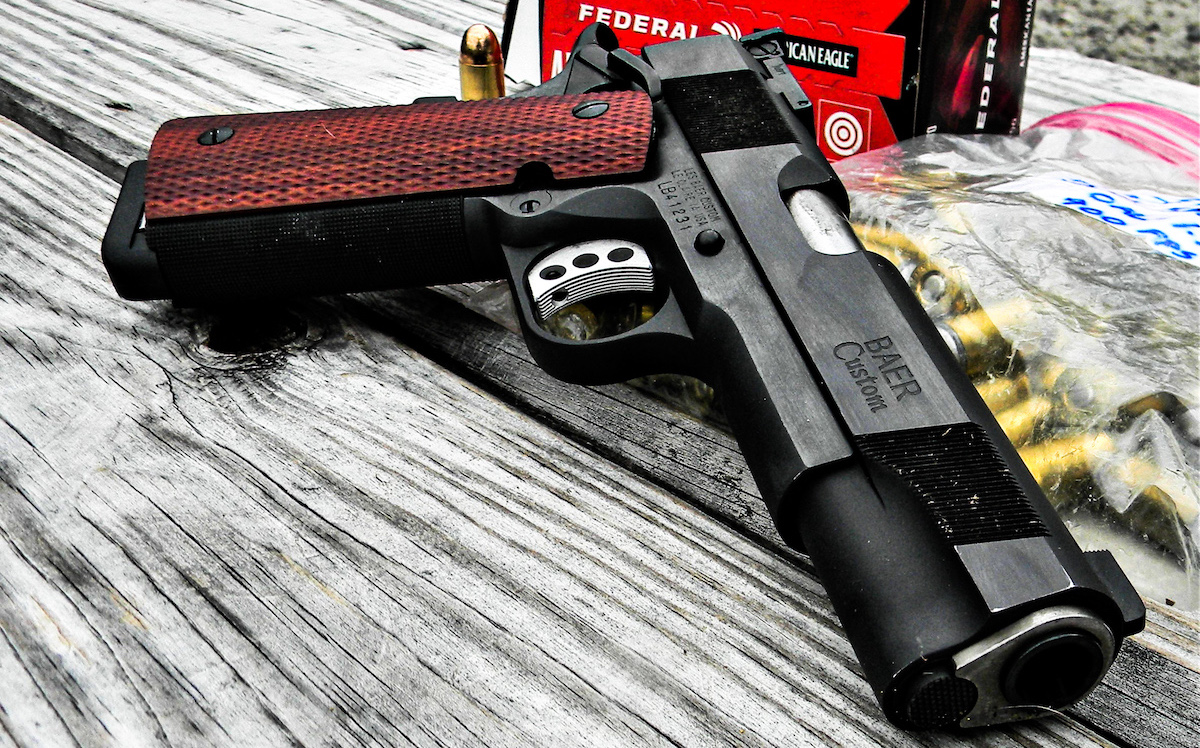
The ambidextrous slide safety is similar to the original Swenson. While this may be a target gun, many handguns for defense use have only a single safety lever. The pistol features a rugged and durable fully adjustable rear sight. The front sight is a dovetail post. The gun features forward cocking serrations, and the front and rear serrations are very well cut and finished. The barrel-to-frame lockup is superb. The slide rolls smoothly, and the movement of the locking lugs tells us that someone who knows what they are doing has put this pistol together.

The handgun requires a barrel bushing wrench for disassembly. This isn’t a drawback because the gun is capable of superior accuracy. The slide-to-frame fit is tight — it takes effort to pull the slide. The result of this fit is that the pistol requires a break-in period. Several hundred rounds are necessary before the pistol begins functioning as it should. Use full power hardball equivalent loads (230 grains/830 fps).
Hemi 572
The second handgun is a newer offering. The Hemi 572 is named after Les Baer’s drag car. Just as this was the ultimate drag racer, the pistol is a top-tier 1911, according to Baer. I can’t say he is wrong. This 1911 is chrome plated, although it may appear stainless at first glance.

The pistol feels and handles much like the Premier pistol. The sights are the same as are the cocking serrations, and the 572 features a G10 grip. These are tacky grips with a good feel. The appearance and style of this pistol are not for everyone; I looked it over for a week before I made the purchase. The look has grown on me, though. The Hemi 572 is loud, almost in your face and features a fiber optic front sight.

A gunsmith once criticized Les Baer builds for not being military spec. While I understand the need for consistency in fitting and upgrading 1911 handguns, the Les Baer is a different tool. Of course, it doesn’t accept MILSPEC Series 70 slides. This is an actual custom pistol. There is no need for parts — replacement or upgrades. If you eventually need an extractor or firing pin stop, they are no problem to replace. The pistols are designed for accuracy, precision, and long-term reliability.

The trigger action is superb. I could add more adjectives, but it’s as smooth as silk. I do not recommend attempting a trigger job on any 1911, especially with inexpensive 1911 types, and this pistol needs no trigger tinkering. If you need a better trigger action, add a complete drop-in parts kit from a reputable maker.
The pistols trigger action is devoid of creep or backlash. Les Baer guarantees a four-pound trigger action, and the Premier breaks at precisely 4.1 pounds on the RCBS trigger-pull gauge. I used the RCBS and a Lyman registering trigger compression gauge to test the Hemi 572. This one breaks at 3.9 pounds. The difference is the Premier has seen much more use.
These handguns come with an accuracy guarantee — a three-inch group at 50 yards. At that range, the front sight tends to subtend the bull’s eye. I do not own a machine rest. I use the MTM Case-Gard K Zone rest and find it adequate for 25-yard accuracy testing. I cannot verify the 50-yard three-inch advertised standard, but it certainly seems the pistols are capable. Several times, I have fired three-shot groups at 25 yards and found two bullet holes touching. The best five-shot group at 25 yards has been with Federal 230-grain Hydra Shock. The Premier put five of these into a 1.25 inch group.
The Hemi 572 has worked best with the Hornady 200-grain XTP, and produced a 1.75-inch group. The Premier cut a 1.8-inch group with Hornady, and the Hemi 572 a 2.0-inch group with Hydra Shock.
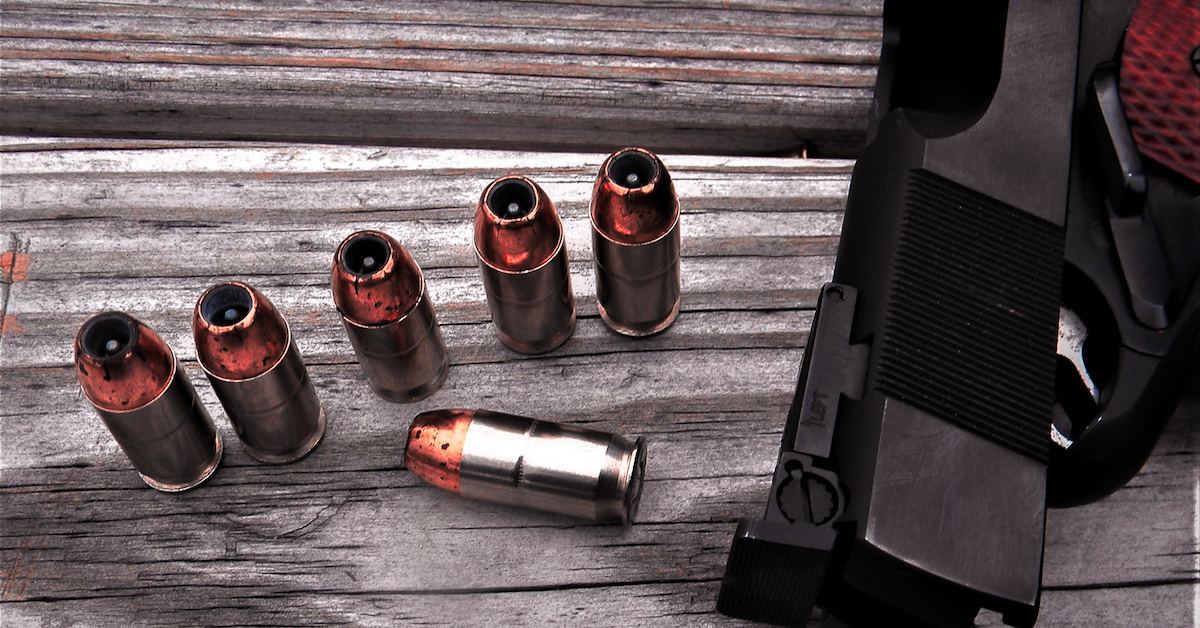
This data likely interpolates to good groups at 50 yards, but firing at 150 feet is a much more significant challenge. Ninety percent of my work with these pistols has been off-hand. Firing either handgun off-hand is a joy. The guns come on target quickly, and they are controllable. Recoil isn’t a problem. Fire, allow the trigger to reset, get on target, and fire again.
As for pricing, I searched up a few, but most sites were out of stock. The Premier will run between $2,500 to $2,800 on average, and the 572 Hemi a few hundred more. Occasionally, a used example will show up. These are often an absolute bargain, priced forty-percent under retail.
I use my Les Baer pistols and carry them occasionally, and if you plan to do the same, you’ll need good leather. I am a fan of Bullard Leather, so I ordered a strong side belt sheath for the 1911. Since I sometimes carry the pistol under light clothing during the more humid months, I also added an inside-the-waistband holster with a strong belt clip.

What I Like
- I like everything about these handguns. They are highly developed examples of my favorite pistol. The trigger action is superb, and the sights are excellent. The fit and finish are among the finest in the industry.
What I Don’t Like
- Not much not to like. Just the same, the pistols are heavy. That said, a lighter gun will not do what these handguns are capable of. Perhaps the Les Baer Stinger would be a better choice for concealed carry.
Compare To:
- The Les Baer handguns are designed for utmost accuracy — Guncrafter, Nighthawk, and Wilson Combat are the only real competitors.


